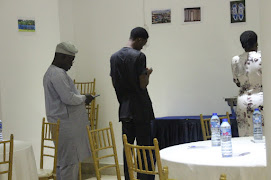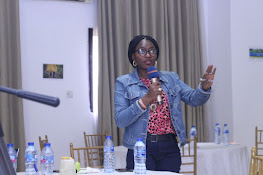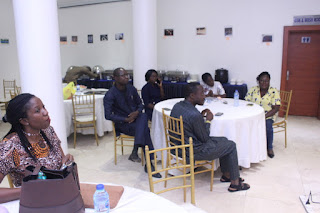ZANKLI RESEARCH CENTRE HOLDS ONE DAY STAKEHOLDERS WORKSHOP TO ENLIGHTEN PARTICIPANTS ON THE POWER OF PHOTOVOICE.
The Photovoice Stakeholders Workshop which was held recently at Bolton White Hotel in Abuja provided a platform for key stakeholders from the National Tuberculosis and Leprosy programme of the Ministry of Health, KNCV Nigeria, STOPTB and other stakeholders to learn about and engage with the Photovoice methodology in the context of Tuberculosis (TB) control in Nigeria. The workshop, organized by the LIGHT Consortium and Zankli Research Centre, aimed to educate participants on the significance of using photographs to amplify the voices of individuals and drive positive change in communities affected by TB.
 Dr. Bimba, Director of Zankli Research Centre, opened the
workshop by expressing gratitude to all attendees and providing an overview of
the LIGHT Consortium's mission. He stated that the photovoice methodology is relatively
new in this part of the world, but he expressed optimism that photovoice is
here to stay and describes it as a phenomenal tool.
Dr. Bimba, Director of Zankli Research Centre, opened the
workshop by expressing gratitude to all attendees and providing an overview of
the LIGHT Consortium's mission. He stated that the photovoice methodology is relatively
new in this part of the world, but he expressed optimism that photovoice is
here to stay and describes it as a phenomenal tool. |
| Dr. Toyosi making his presentation at the workshop |

Some participants looking at the
display pictures on the wall.
During the question-and-answer session, stakeholders raised
inquiries regarding the research methodology, the number of TB facilities in
Nigeria, the limited awareness about TB, and the progress of the LIGHT
Consortium. The LIGHT team and other stakeholders addressed these questions and
concerns, fostering a deeper understanding of the Photovoice approach.
Two key presentations showcased the practical application of
Photovoice. Miss Umoti Yakdum presented a pilot study conducted in Kagoro Local
Government Area (LGA) of Southern Kaduna, focusing on the health challenges
faced by the community due to banditry and subsequent attacks. The presentation
featured powerful images depicting destroyed houses, damaged farmlands, and
bandits using the community's only water source to bath and feed their animals.
The analysis of these photographs shed light on the community's health
challenges and highlighted the potential for Photovoice to create positive
change.

In a group discussion, participants explored ways to improve
the Photovoice methodology and discussed its usefulness in their respective
workspaces. Recommendations included cautious photography practices to avoid
legal repercussions, greater awareness creation and advocacy, collaboration
with partners and policymakers, organizing workshops, and establishing
partnerships. Participants recognized Photovoice as a powerful communication
tool with the potential to generate impactful data, create publishable
articles, drive advocacy efforts, and raise awareness about TB.
The workshop concluded with a suggestion for a larger forum
to facilitate knowledge sharing, best practice exchange, and comprehensive
discussions on Photovoice implementation in TB control. Participants recognized
Photovoice as an underused yet powerful research method and highlighted its
potential to overcome language barriers, create lasting impact, and mobilize
resources for TB control programs.
Written By Andrew Oguntolu, Communication Officer ZRC/LIGHT


















Comments
Post a Comment